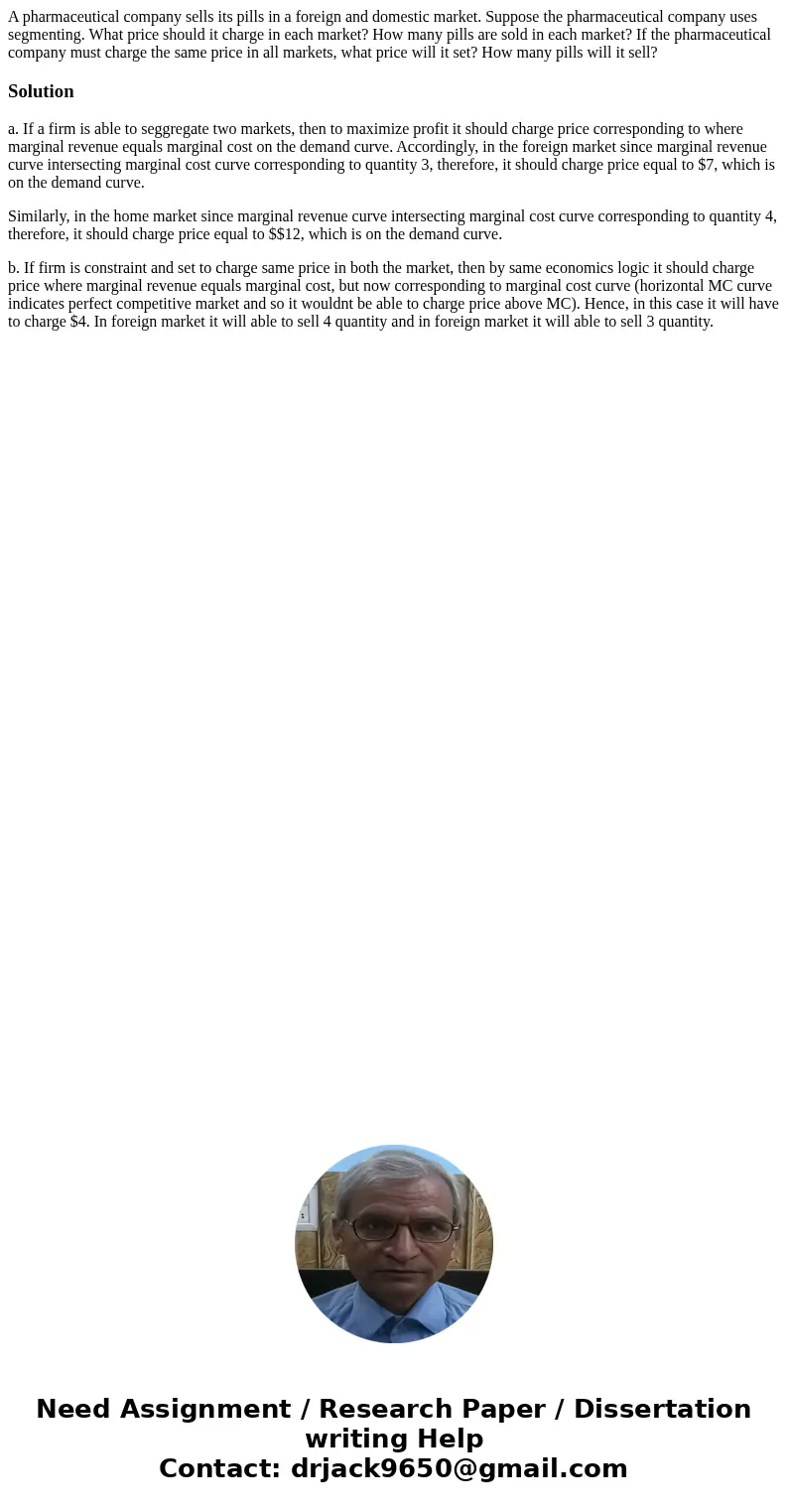A pharmaceutical company sells its pills in a foreign and do
Solution
a. If a firm is able to seggregate two markets, then to maximize profit it should charge price corresponding to where marginal revenue equals marginal cost on the demand curve. Accordingly, in the foreign market since marginal revenue curve intersecting marginal cost curve corresponding to quantity 3, therefore, it should charge price equal to $7, which is on the demand curve.
Similarly, in the home market since marginal revenue curve intersecting marginal cost curve corresponding to quantity 4, therefore, it should charge price equal to $$12, which is on the demand curve.
b. If firm is constraint and set to charge same price in both the market, then by same economics logic it should charge price where marginal revenue equals marginal cost, but now corresponding to marginal cost curve (horizontal MC curve indicates perfect competitive market and so it wouldnt be able to charge price above MC). Hence, in this case it will have to charge $4. In foreign market it will able to sell 4 quantity and in foreign market it will able to sell 3 quantity.

 Homework Sourse
Homework Sourse